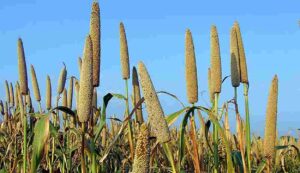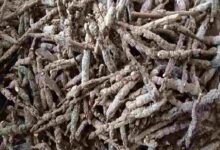Success Story: This variety of millet changed the fortune of this young farmer, know how much profit he is making
Success Story: Thousands of farmers now find inspiration in the narrative of forward-thinking farmer Manoj Kumar Meena, who was born in Khanpur Meena, a tiny hamlet in Rajasthan’s Dholpur district. Manoj Kumar gave farming a fresh perspective as he took over the family’s agricultural responsibilities after centuries of farming. Manoj Kumar, a postgraduate and ITI graduate, transformed farming from a traditional practice to a contemporary and lucrative enterprise.

He has been farming for the last 15 years, and he has succeeded as a farmer today by continuously trying new things. In addition to leasing 20 bighas of property, he owns 40 bighas of land. His main crops are sesame, millet, mustard, and wheat. However, the crop he has been cultivating for the last six years—Yodha Plus Millet from Shakti Vardhak Company—is what gave him a new identity.
The start of farming and a shift in perspective
Manoj Kumar, a successful farmer, said that he was only a typical farmer when he first began farming. No soil test was conducted, no consideration was given to the seed quality, and no specific strategy for managing irrigation and nutrition was created. This was the cause of the very poor profit despite a lot of effort. But with time, he learned things. Following this, he began utilizing enhanced seeds from reputable businesses and choosing crops based on the terrain.
A Fresh Start
When Manoj Kumar initially utilized the Yodha Plus Millet seed from Shakti Vardhak Hybrid Seeds Company around six years ago, he saw unexpected outcomes. He saw that the plants were medium in length, which prevented the harvest from falling in heavy rain or wind. The ears were robust and thick, the germination was excellent, and—above all—there was no illness. Additionally, his animals enjoyed eating the soft feed.
He grew Yodha Plus Millet in 40 bighas last year as well, yielding 15–16 maunds of output per bigha (1 maund = 40 kg). He received rates per quintal that ranged from ₹2200 to ₹2700 when he sold it in the market. In addition to earning him millions of rupees, this crop gave him animal feed.
A great choice for productive farming
The main advantage of Yodha Plus Millet, according to prosperous farmer Manoj Kumar Meena, is that the crop is ready and completely mature in only 80 to 90 days. As a result, the land soon dries up and the following crop is sown on schedule. Grain development begins early since this variety enters the blooming stage in around 50 days. The plants seem consistently robust and healthy, and they grow densely. Because of its high disease resistance, this cultivar requires less money for pesticides and medications. It directly benefits the company by increasing earnings. Its feed is fairly soft except for this. All in all, this variety has been quite helpful to me in terms of both grain and fodder.
Compatibility between irrigation and nature
According to Manoj Kumar, Yodha Plus millet works particularly well in places with little access to irrigation. I cultivate millet with rainwater. Even with minimal rain, this cultivar produces well and can withstand drought. Its plant’s stem is so robust that the crop can withstand severe winds and rain.
Extra money made from raising animals
Ten animals belong to Manoj Kumar. He mostly feeds his animals Yodha Plus millet. As a result, he produces more milk and sells it to earn more money. He may use a single crop to aid with animal husbandry, food, and fodder in this manner.
Choosing more crops and seeds
Manoj Kumar grows wheat, mustard, sesame, and millet for the Shakti Vardhak enterprise. He employs types such as the wheat series 1105 from the Shakti Vardhak firm. Additionally, he has tried using this brand’s seeds in veggies with great success. He claims that “Shakti Vardhak is a reliable brand that has elevated my farming to a new level.”
Variation in yearly income and financial status
Manoj Kumar’s financial situation has improved as a result of his current yearly income of around 10 lakh rupees from farming and animal husbandry. “Farming is not a loss-making deal,” he thinks. All you need is hard labor, the appropriate technology, and the right seeds. Every farmer can succeed if we use innovative ideas, cutting-edge technology, and reliable businesses.

